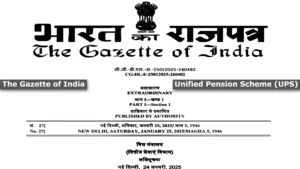Income Tax Slabs 2025-26 Budget 2025 Live Updates: Providing substantial relief to the middle class, particularly salaried individuals, Finance Minister Nirmala Sitharaman announced that under the revised tax regime, those earning up to ₹12.00 lakh annually (after considering the rebate under section 87A) will not have any tax liability. Presenting the Union Budget 2025 in the Lok Sabha on February 1, she introduced a new tax structure featuring slabs of 5%, 10%, 15%, 20%, 25%, and a maximum of 30%. This marks her eighth consecutive budget presentation, bringing several additional benefits for taxpayers.
New v/s New Regime — Income Tax Slab, FY 2024-25 (AY 2025-26) vs. FY 2025-26 (AY 2026-27)
| New Regime | v/s | New Regime |
|---|---|---|
| FY 2025-26 Tax Slab | Tax Rate | FY 2024-25 Tax Slab |
| Upto ₹ (4.0 lakh) | Nil | Upto ₹ (3.0 lakh) |
| ₹ (4.0 lakh to 8.0 lakh) | 5% | ₹ (3.0 lakh to 7.0 lakh) |
| ₹ (8.0 lakh to 12.0 lakh) | 10% | ₹ (7.0 lakh to 10.0 lakh) |
| ₹ (12.0 lakh to 16.0 lakh) | 15% | ₹ (10.0 lakh to 12.0 lakh) |
| ₹ (16.0 lakh to 20.0 lakh) | 20% | ₹ (12.0 lakh to 15.0 lakh) |
| ₹ (20.0 lakh to 24.0 lakh) | 25% | —— |
| More than (24.0 lakh) | 30% | More than (15.0 lakh) |
Under the new tax regime, salaried employees are eligible for a standard deduction of ₹75,000. This effectively reduces their taxable income to zero for earnings up to ₹12,75,000. However, it is important to note that this rebate cannot be applied to special rate income, such as long-term or short-term capital gains, which are taxed separately at their respective rates.
Nearly 85% of taxpayers, including the self-employed, small business owners, and salaried individuals, stand to benefit from this change. By increasing the income threshold for the highest 30% tax rate to ₹24 lakh—up from ₹15 lakh in the new tax regime and ₹10 lakh in the old one—taxpayers can enjoy greater savings and higher take-home income.
New Regime Tax Slab for Current Financial Year 2024-25 and Previous Financial Year 2023-24
| FY 2024-25 Tax Slab | Tax Rate | FY 2023-24 Tax Slab |
|---|---|---|
| Upto ₹ (3.0 lakh) | Nil | Upto ₹ (3.0 lakh) |
| ₹ (3.0 lakh to 7.0 lakh) | 5% | ₹ (3.0 lakh to 6.0 lakh) |
| ₹ (7.0 lakh to 10.0 lakh) | 10% | ₹ (6.0 lakh to 9.0 lakh) |
| ₹ (10.0 lakh to 12.0 lakh) | 15% | ₹ (9.0 lakh to 12.0 lakh) |
| ₹ (12.0 lakh to 15.0 lakh) | 20% | ₹ (12.0 lakh to 15.0 lakh) |
| More than (15.0 lakh) | 30% | More than (15.0 lakh) |
| Health and Education Cess | 04% | Health and Education Cess |
To calculate income tax under the new tax regime, an individual must first determine their gross income by summing earnings from all sources, including salary, property, and other income.
Next, they should apply the applicable tax rates to their income based on the new tax regime’s slab structure. After computing the tax for each slab, the total tax liability is obtained by summing these amounts.
Additionally, a 4% Health and Education Cess is added, along with any applicable surcharge, to determine the final tax payable.
Unlike the old regime, the new tax regime does not allow most deductions, such as those under Section 80C or House Rent Allowance (HRA). However, certain exemptions remain, such as the employer’s contribution to the NPS.
Q: What changes have been made to the income tax rebate under Section 87A in the 2025 Budget?
A: The government has raised the rebate threshold under Section 87A from ₹7 lakh to ₹12 lakh, offering significant tax relief to middle-income earners. Additionally, the maximum rebate amount has increased from ₹25,000 to ₹60,000. For salaried individuals who receive a standard deduction of ₹75,000, the effective tax-free income limit is now ₹12.75 lakh.
Q: What changes have been proposed for Tax Deduction at Source (TDS) in the 2025 Budget?
A: Finance Minister Nirmala Sitharaman has announced a rationalization of TDS by reducing the number of rates and increasing threshold limits for better clarity and uniformity. Key changes include:
- The TDS exemption limit on interest income for senior citizens has been doubled from ₹50,000 to ₹1 lakh.
- The annual threshold for TDS on rent has been raised from ₹2.40 lakh to ₹6 lakh.
These revisions aim to reduce the number of transactions subject to TDS, benefiting small taxpayers who receive smaller payments.







